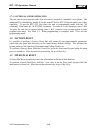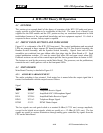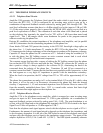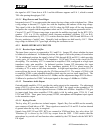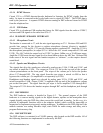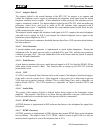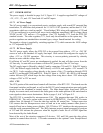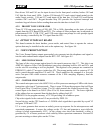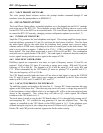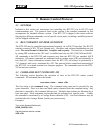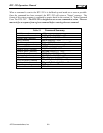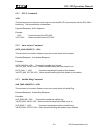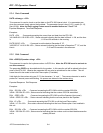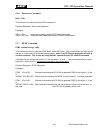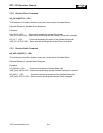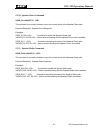
RTU-292 Operations Manual
4.5.3 VOICE PROMPT SOFTWARE
The voice prompt board software receives the prompt number command through J1 and
translates it into the prompt address in EPROM U5.
4.6 LOCAL PHONE OPTION
The Local Phone Option allows a standard telephone set to be plugged into an RJ-11C modular
jack at the rear of the RTU-292. This telephone set may then be used to place or receive calls
via the RTU-292 to the PSTN or an associated radio. The Local Phone Option can also be used
to control the RTU-292 remotely, changing various configuration options (see section 3.7).
4.6.1 INTERFACE CIRCUITRY
Amplifier U3A generates the local telephone send signal. This mixing amplifier accepts inputs
from the dial/busy generators U5 and U6, and from the local phone send line. This line from
the audio board, may be the audio from the telephone lines, prompt tones, receiver audio,
sidetone audio or DTMF tones, depending on the state of control gates on the audio board. The
gain is set to produce an approx. -9 dBm level at U3A-1. U3B is configured as a conventional
active hybrid. The local phone send signal is sent to U3B via R8 and R35. The combination
send plus receive signal reaches U3B via R7. The send signal is subtracted from the send plus
receive signal, leaving only the receive signal at the output of U3B.
4.6.2 DIAL/BUSY GENERATORS
Dial/Busy signals are composed of two tones, so a pair of frequency sources, U5 and U6, are
required. Each of these 555 timer ICs provides a square wave output. R30 and C10 set the
frequency of U5 to 460 Hz. The frequency of U6 is 620 Hz when Q2 is off, set by R24 and
C11. When commanded by the CPU Board, Q2 turns on, placing C12 in parallel with C11.
This cuts the frequency of U6 to 350 Hz.
The CPU Board normally holds the timers off, but when a high signal is sent on the DTONE
line, U5 and U6 turn on. Their square wave outputs are smoothed by the RC filter networks
made up of R31, R34, and C18 and R32, R33, and C17.
4.6.3 LOCAL TELEPHONE LINE INTERFACE
Tip and Ring signals are brought to the board on J1. Varistor RV1 limits transients that may
appear on the local phone line. The silent ring trip circuit will sense a voltage drop across R22
if the local phone is taken offhook while it is not ringing (K1 will be in the non-energized state
shown in the schematic). This voltage drop will turn on Q5, which signals the offhook
condition to the CPU board via J1-5.
The local phone is made to ring by the CPU Board when it J1-9 is brought high, turning on Q1
and energizing K1. K1 switches the ring generator U4 onto the telephone line. The ring
cadence is controlled by the CPU Board via the RING signal at J1-2. If the telephone goes
offhook during the ring cycle, the voltage drop across R18 turns on Q3, pulling J1-5 high.
Diodes CR1 and CR2 provide transient suppression for the audio circuitry.
JPS Communications, Inc.
4-26



